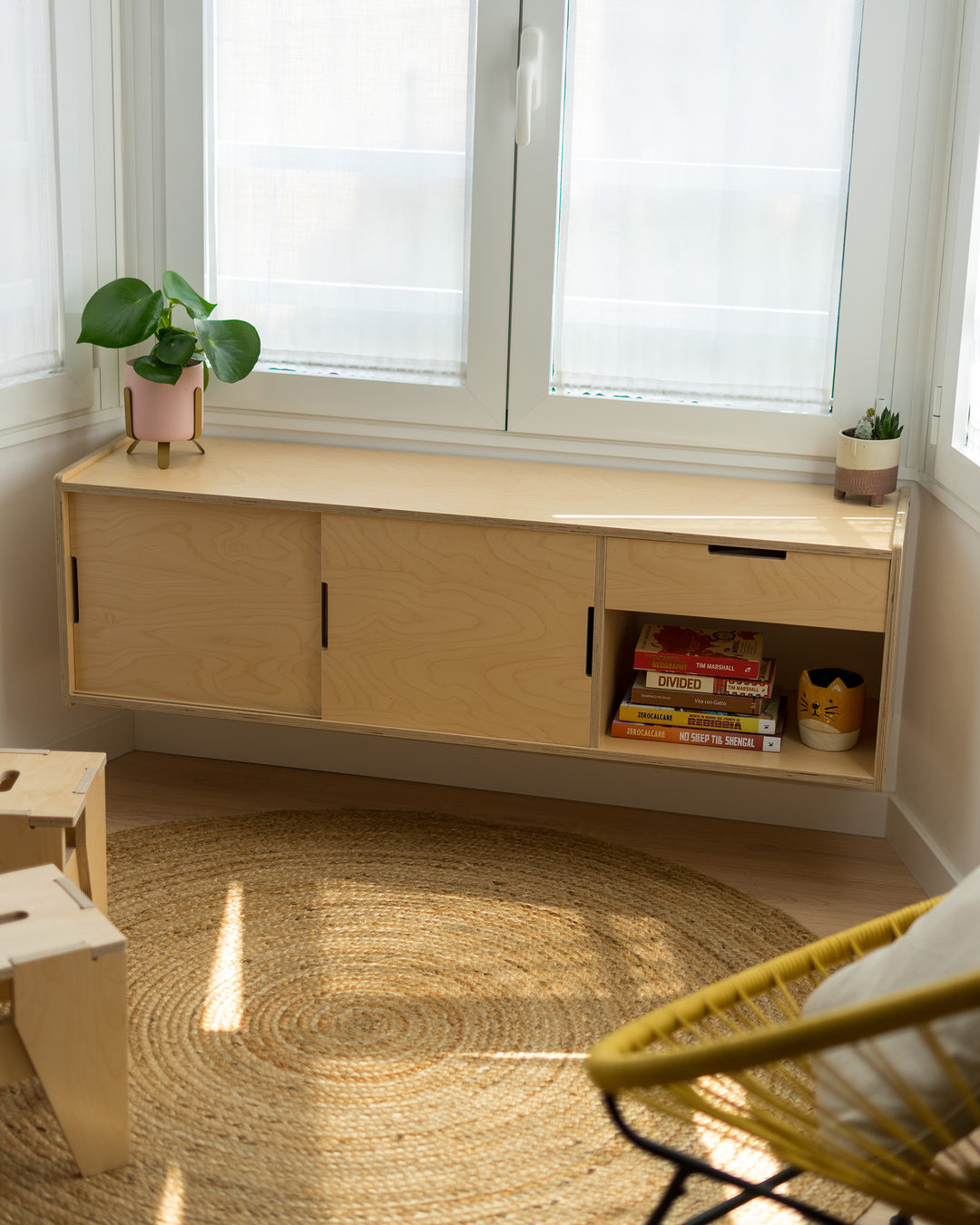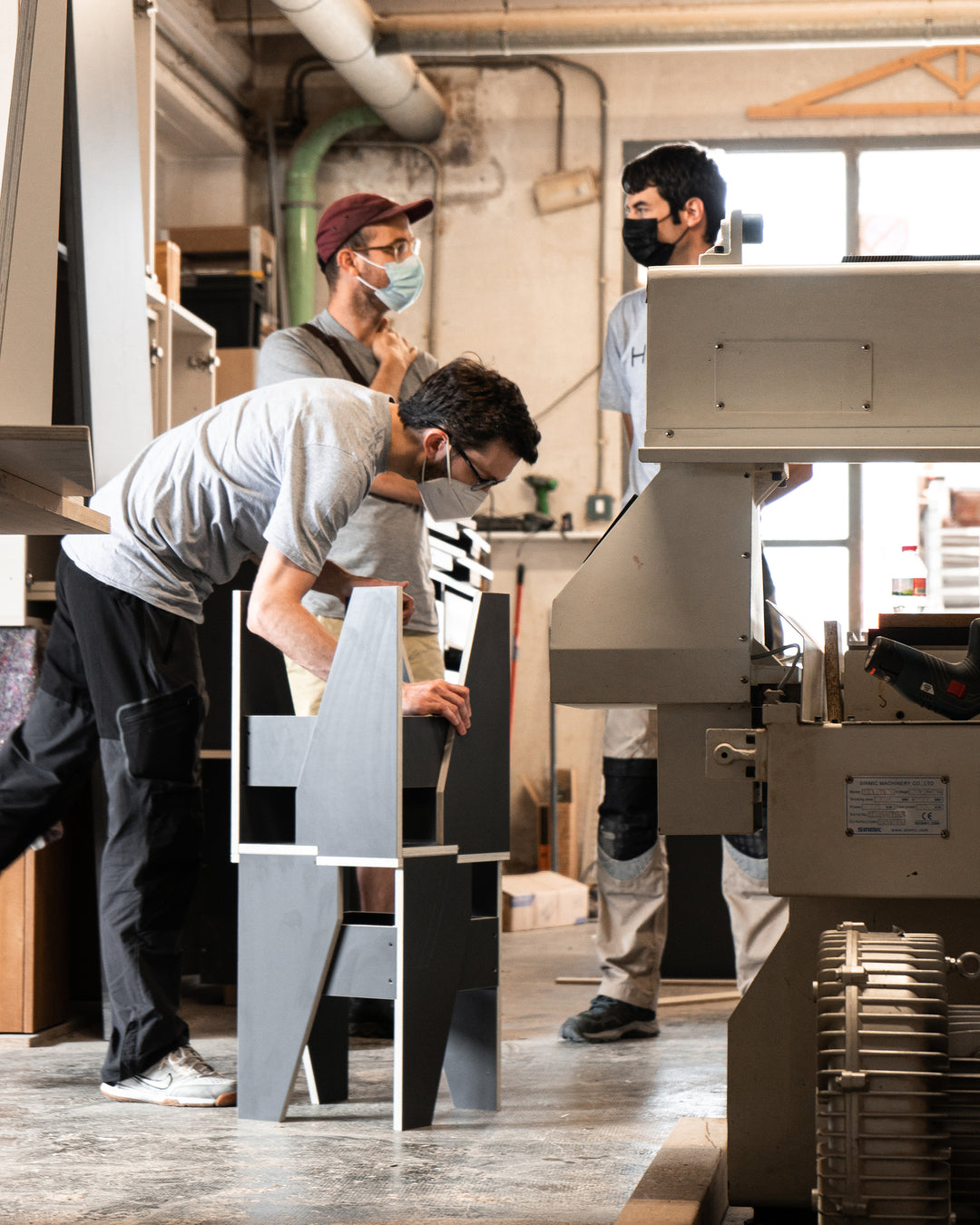How CNC production reshaped our product
It may seem easy when you look at it now. The shapes perfectly cut joining together seamlessly, the edges smoothed, the screws entering without much effort. You look at the package with the symmetrical pieces joined in a reminiscence of Lego and Tetris, and you think: it wasn't that hard, was it? Well, it was! It was very hard.
We instantly loved the original version of IN, the light, soft fir tree wood, our beloved "tricapa" (three layers, in Spanish) and obviously with the mastery of Gastón's craftsmanship, the passion he'd put in every layer of varnish, how could you not? Unfortunately, our idea to produce the same object in a more industrial, repeatable way was far from being in sight when we started working on it at the beginning of 2019.
The design and concept were clear, but producing it in the same artisanal way Gastón created the original prototype was simply not feasible. The product would be too expensive to sell and too lengthy to produce. We knew the only solution was to use machine cutting (CNC) to reduce the finishing process to the minimum, the only issue? None of us had actually designed or used a CNC machine before!
With a good dose of naivety as well as enthusiasm, we walked backwards from the physical prototypes to the drawing board, the digital drawing board (AutoCAD), where we refined the shapes and proportions, thought of the mechanisation for the joints and debated on whether making a self-assembly or glued version.
Finally, after 3 months of discussions, afternoons in front of a screen with countless mockups on papers covering the worktops, we were ready to have our first prototypes built.
That's when we thought the hard part was done, but finding the right partner to produce the parts was no easy quest and so, when we first visited the industrial carpentry we selected and looked at the result, our hearts sunk. It just wasn't good enough. It looked like the ugly version of the original. The sides didn't line up with the top, the central supports didn't touch early enough, allowing the diagonals to get stuck with little pressure.
We didn't give up and we tried again with a different supplier, however, despite a better result we still weren't anywhere near where we wanted to be.
So we decided to take a step back, study more closely CNC production practices and went back to the drawing board introducing a well know technique called dog-bone and changing the material from our tricapa to birch plywood, which is much stronger and consistent as production material.
The thickness changed, the joints changed, the finishing changed... we had to rethink it all, whilst keeping faith to the original design, but when we went back into production and saw the result, we could finally see it coming together.
We still had to adjust a few details but we were ready to produce something we could proudly sell, not just a prototype. And in the process, we created something different from where we started, something that doesn't end the moment it comes out of the workshop, something that the customer can finish to create at home, appreciating the design in each component.
And the self-assembly version of IN was born.


